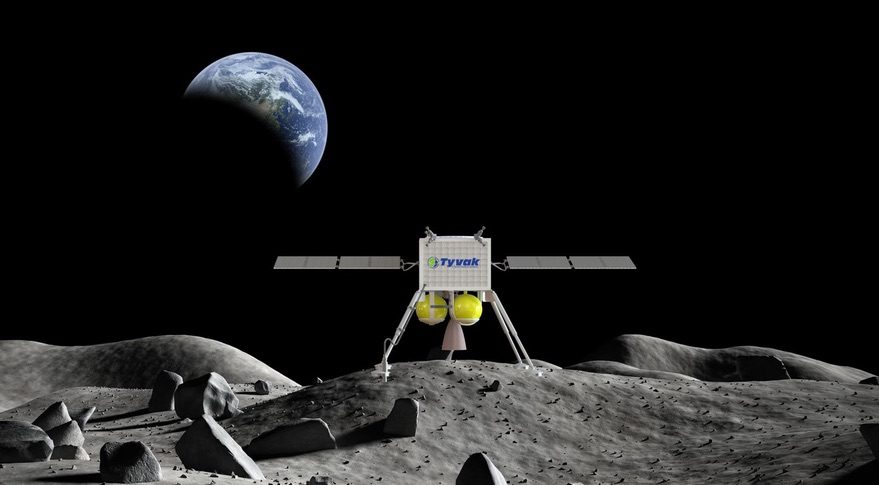WASHINGTON — NASA announced Nov. 18 that it was adding five companies to a contract to perform commercial deliveries of payloads to the surface of the moon, a group that ranges from small ventures to Blue Origin and SpaceX.
NASA said the five companies — Blue Origin, Ceres Robotics, Sierra Nevada Corporation (SNC), SpaceX and Tyvak Nano-Satellite Systems — had been selected to join the nine companies with Commercial Lunar Payload Services (CLPS) contracts. All 14 companies are now eligible to bid on future task orders for the delivery of payloads to the lunar surface.
This “on-ramp” to CLPS was specifically designed to attract companies with the capability to carry heavier payloads to the surface of the moon. This includes NASA’s Volatiles Investigating Polar Exploration Rover (VIPER) mission, a rover NASA plans to fly in 2022 to look for evidence of water ice at the south pole of the moon.
“We were actually looking to do this a little bit later, but we saw the need to accelerate that,” Steve Clarke, deputy associate administrator for exploration in NASA’s science mission directorate, said of that on-ramp in a teleconference with reporters. The larger landers, he said, could deliver tools needed by astronauts ahead of their landing missions, in addition to delivering science payloads.
The largest lander, by far, of the new entrants is from SpaceX, which bid its Starship reusable launch vehicle. Gwynne Shotwell, president and chief operating officer of SpaceX, said that Starhip will be able to deliver up to 100 metric tons of cargo to the surface of the moon and return an unspecified amount back to Earth.
“We do think this is a really neat program. It reminds us a bit of the COTS program,” said Shotwell, referring to NASA’s Commercial Orbital Transportation Services effort that funded the development of SpaceX’s commercial cargo capability.
Shotwell said Starship lunar lander missions could begin in 2022. Such missions would be cargo only, but she said could serve as a “nice stepping stone” to later crewed missions. She didn’t give a date for crewed missions, but said SpaceX would fly Starship “a lot” before flying any missions with people on board.

Blue Origin will offer NASA its Blue Moon lander that the company unveiled in May, capable of carrying several tons of cargo to the lunar surface. “It has a lot of payload capacity, power to get through the lunar night, a very large, open payload deck,” said Brent Sherwood, vice president of advanced development programs at Blue Origin. He declined later to state when the lander would be ready for CLPS missions, saying it would depend on the specifics of each individual CLPS task order.
NASA also added smaller landers to the CLPS contract. “Our company is in a great position not only to bid on smaller payloads going to the Moon because we build our own satellite systems,” said John Roth, vice president of business development at SNC. Roth said the company could take larger payloads leveraging technologies developed for its Dream Chaser vehicle, but he did not disclose how large of a payload the company could carry. SNC would be able to start lunar lander missions in 2022, he said.
Michael Sims, chief executive of Ceres Robotics, said his company’s CLPS award was a sign small companies like his had a role in NASA’s broader plans. “Space exploration and, especially, humans becoming multiplanetary requires an entire ecosystem of companies,” he said. “Small player being an agility and a creativity that adds to the mix.” He said his company’s lander should be available for missions starting in 2023.
Tyvak Nano-Satellite Systems is best known for being a smallsat manufacturer. Marco Villa, the company’s chief operating officer, said Tyvak would leverage that experience in its lunar landers. “We’re going to start with something smaller,” he said. “Our flexibility and ability to scale up is going to lead us to fulfill more and more complex missions in the near future.” He declined to say when his company’s lander would be ready.
The five companies, selected from eight that submitted proposals to this on-ramp, join the original nine CLPS companies selected by NASA nearly a year ago: Astrobotic, Deep Space Systems, Draper, Firefly Aerospace, Intuitive Machines, Lockheed Martin, Masten Space Systems, Moon Express and OrbitBeyond. In May, NASA awarded task orders to Astrobotic, Intuitive Machines and OrbitBeyond for lunar lander missions, but OrbitBeyond canceled its task order two months later, citing internal business issues.
Clarke said NASA is developing a new task order companies that should be released “sometime soon” for the CLPS companies to bid on, as well as one for the VIPER rover. The agency is separately working on a call for proposals for science instruments to fly on those missions, with a goal of doing two “deliveries” of payloads to the lunar surface every year.
#Space | https://sciencespies.com/space/nasa-adds-five-companies-to-commercial-lunar-lander-program/
No comments:
Post a Comment